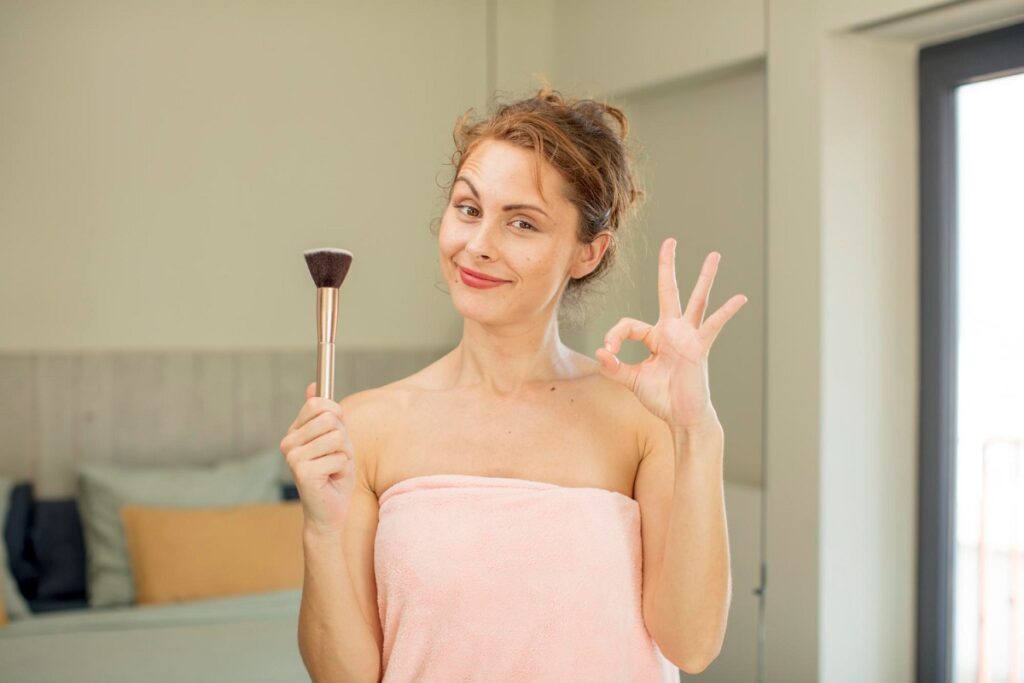There are some reflections that the mirror powerfully reveals. On the forehead, around the lips, or nestled between the eyebrows, certain signs of aging remain visible, even when the face is perfectly still.
These aren’t the typical “expression lines” that emerge with a smile or frowned brow; rather, they are etched reminders that manifest even at rest. We call them static wrinkles—and they often create the illusion that the face ages faster than the rest of the body.
These stubborn lines, that don’t budge, can be quite bothersome. Where do they come from? Why do they sometimes appear as early as 35, even when the skin still seems supple and hydrated?
While anti-aging injections and creams found in department stores are popular, a far simpler—and much older—solution resurfaces in the most natural beauty routines: a recipe handed down through generations, requiring neither syringe nor chemical but rather an ingredient commonly found in our kitchens.
Understanding Static Wrinkles: Why They Form
Unlike dynamic wrinkles—which only appear with facial movements—static wrinkles are visible even when the face is at rest. They primarily arise from skin laxity due to a decline in collagen, elastin, and hyaluronic acid in the dermis, along with factors such as sun exposure, smoking, chronic stress, and an unhealthy lifestyle.
Certain areas are particularly prone to these lines:
- The area around the lips (known as “smoker’s lines”),
- Nasolabial folds (from the nose to the mouth),
- The neck and décolletage,
- The cheeks and temples, which may appear prematurely sunken.
The challenge is that once these wrinkles set in, they are more difficult to smooth out than those that depend solely on facial expressions. This highlights the importance of early intervention, whether through preventive measures or gentle yet effective support for cellular regeneration.
The Timelessness of Natural Remedies
Long before the era of €120 serums, chemical peels, and Botox, both women and men had their own beauty secrets. Many of these tried-and-true methods—far from marketing hype—have stood the test of time. One particularly simple and economical remedy has been passed down for decades in Mediterranean countries: the olive oil mask.
Rich in essential fatty acids, vitamin E (a powerful antioxidant), and polyphenols, olive oil penetrates deeply into the epidermis, enhancing its elasticity and fortifying the skin barrier. It helps retain the skin’s natural moisture while combating cellular oxidation—one of the main culprits behind premature aging.
How to Make Your Own Olive Oil Mask
The recipe requires just two ingredients and five minutes of your time. However, its effectiveness lies in the consistency and technique of application.
Here’s how to do it:
- In a bowl, blend 1 tablespoon of extra virgin olive oil (preferably organic) with 1 egg yolk.
- Apply the mask to a clean face, taking care to avoid the eye area.
- Leave it on for 15 to 20 minutes.
- Rinse with lukewarm water and follow up with a cotton pad soaked in floral water (rose or chamomile is best).
- Repeat 2 to 3 times a week.
The egg yolk provides proteins and sulfur, which stimulate skin regeneration. Together, these two ingredients rejuvenate the skin without adding excess oil.
While results may not be instantaneous, with regular applications, the skin appears more supple, firmer, and some static wrinkles visibly diminish. This ancient and natural ritual may not work miracles… but its effectiveness certainly lies in consistency.




